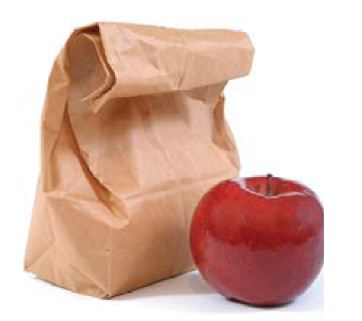
By Sheila Gains
Family and Consumer Science Agent, Arapahoe County

By Sheila Gains, Family and Consumer Science Agent, Arapahoe County
What can I pack that won't spoil by lunch time and contains a well balanced selection of healthy foods that my child will eat? Have you asked yourself this question lately? Every fall, as school starts, many parents face the dilemma of what to pack for lunch.
Here are some tips to help you and your child select and pack healthy, safe and tasty lunches:
| Sample Food List: | v= Needs Refrigeration |
|---|---|
| Grains (select whole grain when possible) | |
| Crackers, Bread Sticks | |
| Bread, Muffins, Biscuits | |
| Tortilla, Pita | |
| Rice Cakes, Popcorn | |
| Dry Cereals | |
| Fruits (some fruit leathers and fruit snacks have very little fruit and a lot of sugar) | |
| Fresh, Whole (Apple, Orange, Pear, Peach, Kiwi, Banana, etc.) | |
| Dried (fruit leathers, raisins, cran-raisins etc.) | |
| Canned in juice or light syrup (fruit cups etc.) | v If can/cup is opened. |
| Vegetables (some vegetable juices are high in salt) | |
| Fresh (raw carrots, celery, pea pods, broccoli, or cherry tomatoes, etc.) | |
| Dried (carrot, or zucchini chips, etc.) | |
| Canned (vegetable juice, vegetable soup, etc.) | v If can is opened |
| Protein-Meats, Nuts, Beans, & Cheese | |
| Fresh Meat(sliced cooked meat or left-over's) | v |
| Peanut or tree nut butters (check with school for allergy restrictions) | |
| Cheese, slices, cubes or sticks (string cheese) | v |
| Beans (refried, hummus, pork and beans, etc.) | v If fresh, or can is opened. |
| Hard boiled egg | v |
| Tuna | v If can or pouch is opened. |
| Dairy (cold fluid milk is often sold at school) | |
| Fluid Milk | v Unless the package states it requires no refigeration. |
| Yogurt | v |
| Yogurt drink | v |
| Pudding made with milk | v Unless the package states it requires no refigeration. |
| Cottage Cheese | v |
| Others (limit these) | |
| Cookies, Chips, etc. | |
| Dips for vegetables or fruit (salsa, ranch, yogurt, etc.) | v If container is opened. |
Lets Talk: Letting kids help pick what goes into their lunch is a great way to start a conversation about nutrition and health. Encouraging them to pick at least one item from each of the major food groups helps them understand the concept of eating a variety of food everyday.
Don't worry if kids come home with food that was not eaten. Some days children will be hungry and focused on eating. Other days they might not be as hungry, perhaps they were distracted or had a food treat in the classroom before lunch, etc. Occasionally ask children if they think they're packing enough, too much, or want some different food choices. Assure children that these questions are not meant to make them feel bad that they didn't clean their plate/lunch box. But it helps them make adjustments to how much and what they pack the next time.
Recipe for Health:
Bean Dip (Kids love to dunk crackers and veggies into this dip!)
Ingredients:
Directions:
For a well balanced lunch include 1/2 cup-2/3 cup bean dip, 6-12 whole wheat crackers, 4-6 carrot sticks, a stick of string cheese and an orange (whole, peeled or quartered). Pack in an insulated lunch box with a frozen gel pack. Buy cold low fat milk at school or pack a bottle of water.
Copyright © 2024 - All Rights Reserved - Colorado State University
CSU Extension | Equal Opportunity | Disclaimer | Privacy | Apply to CSU | CSU Home